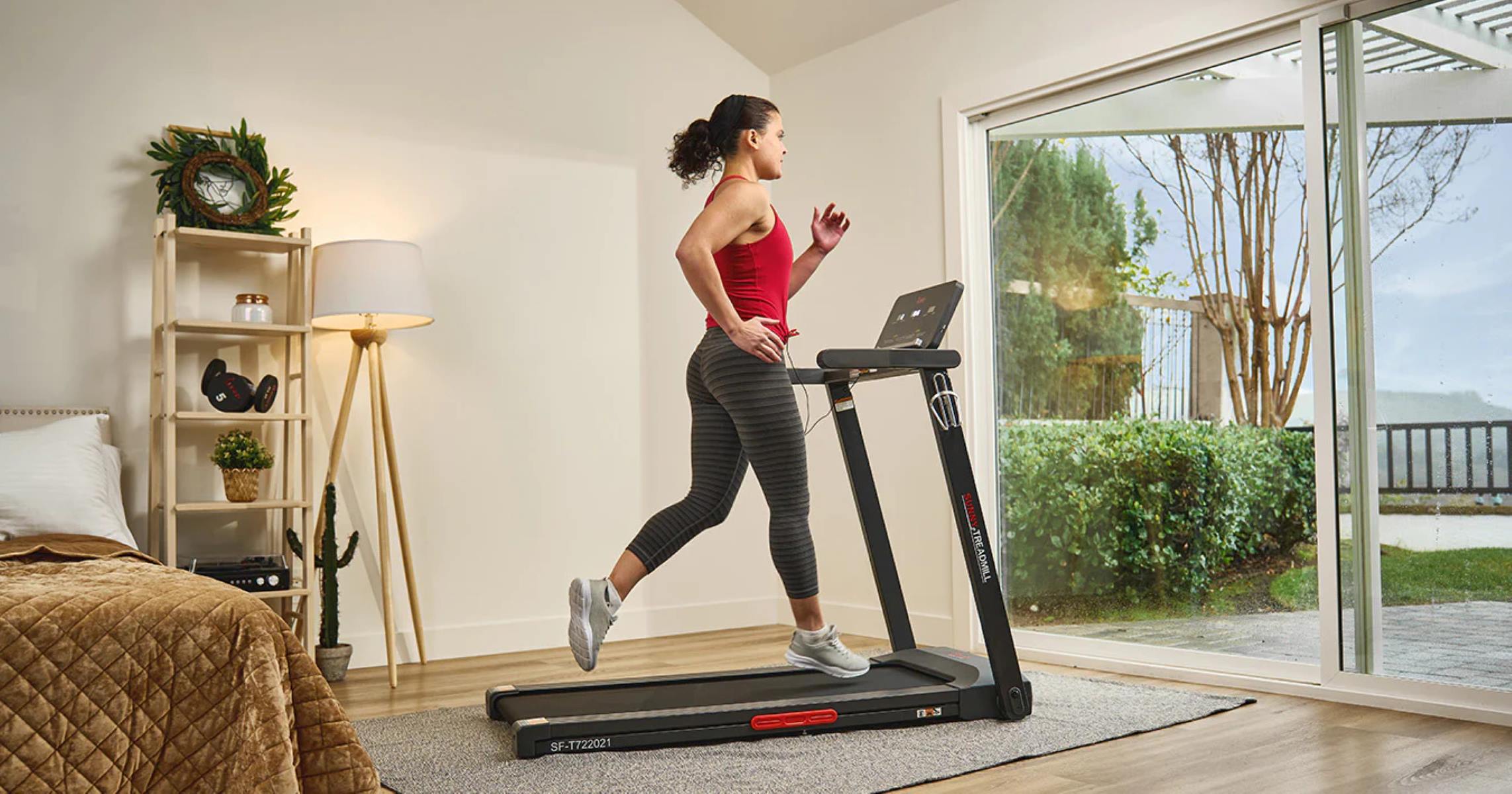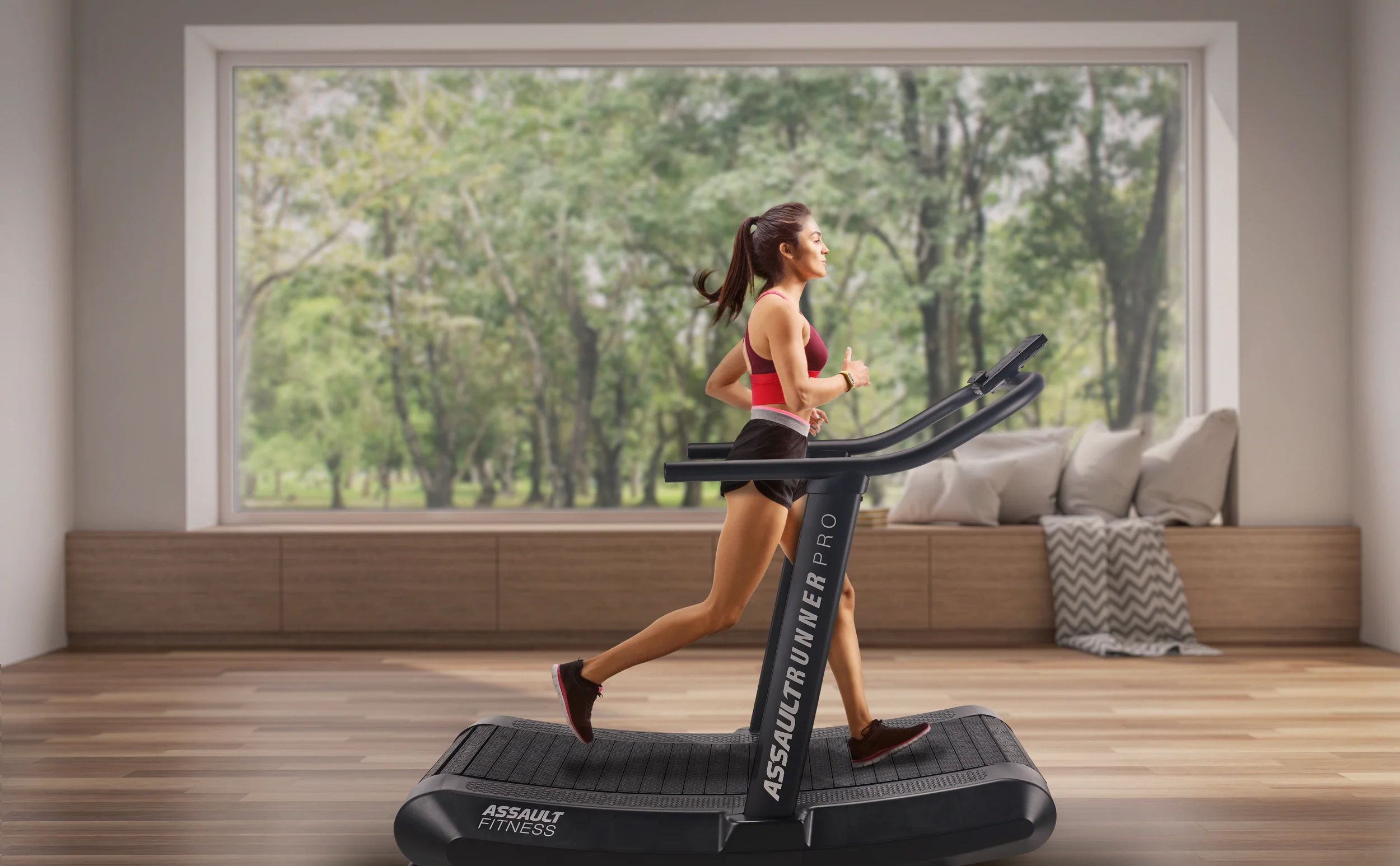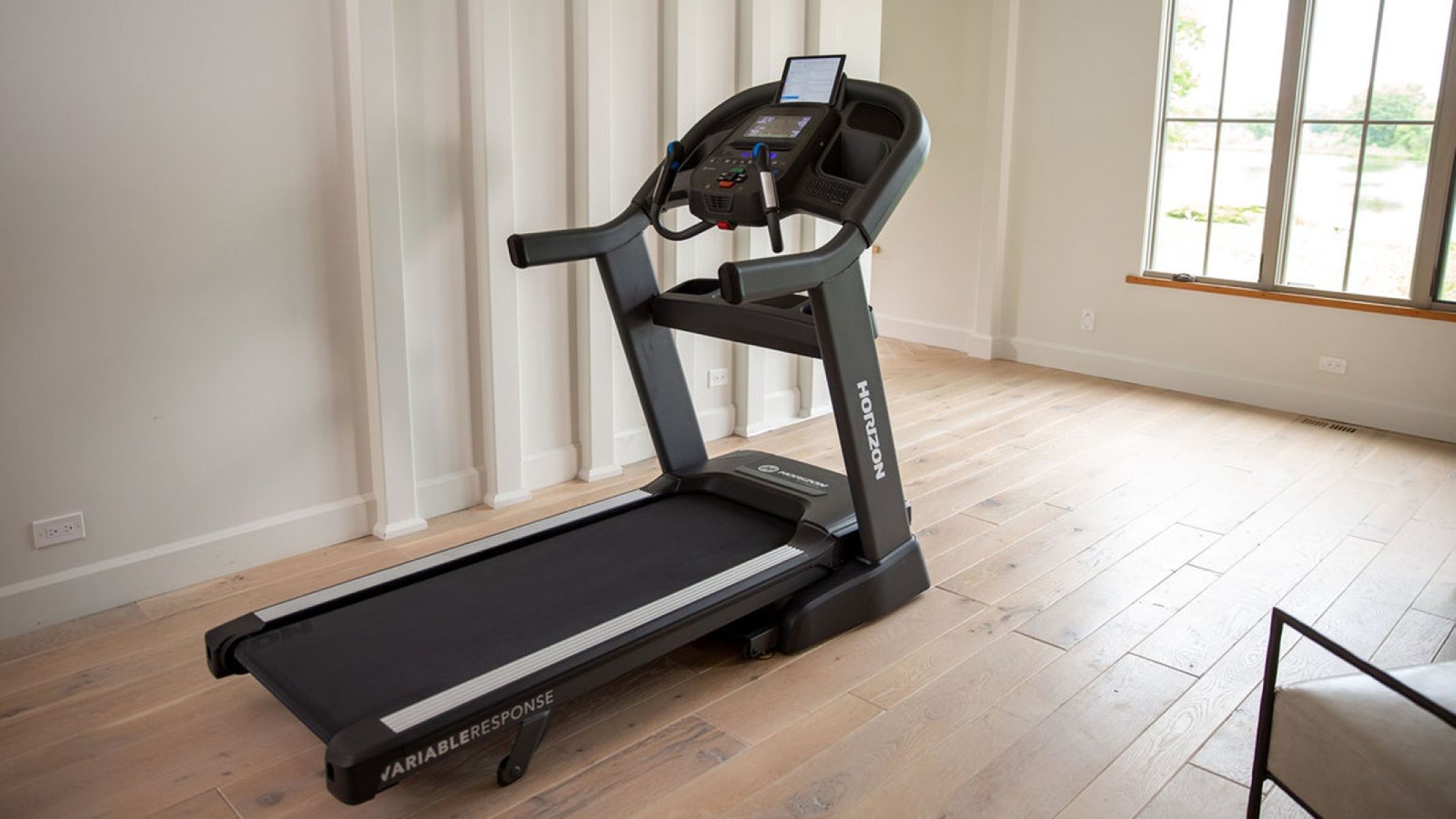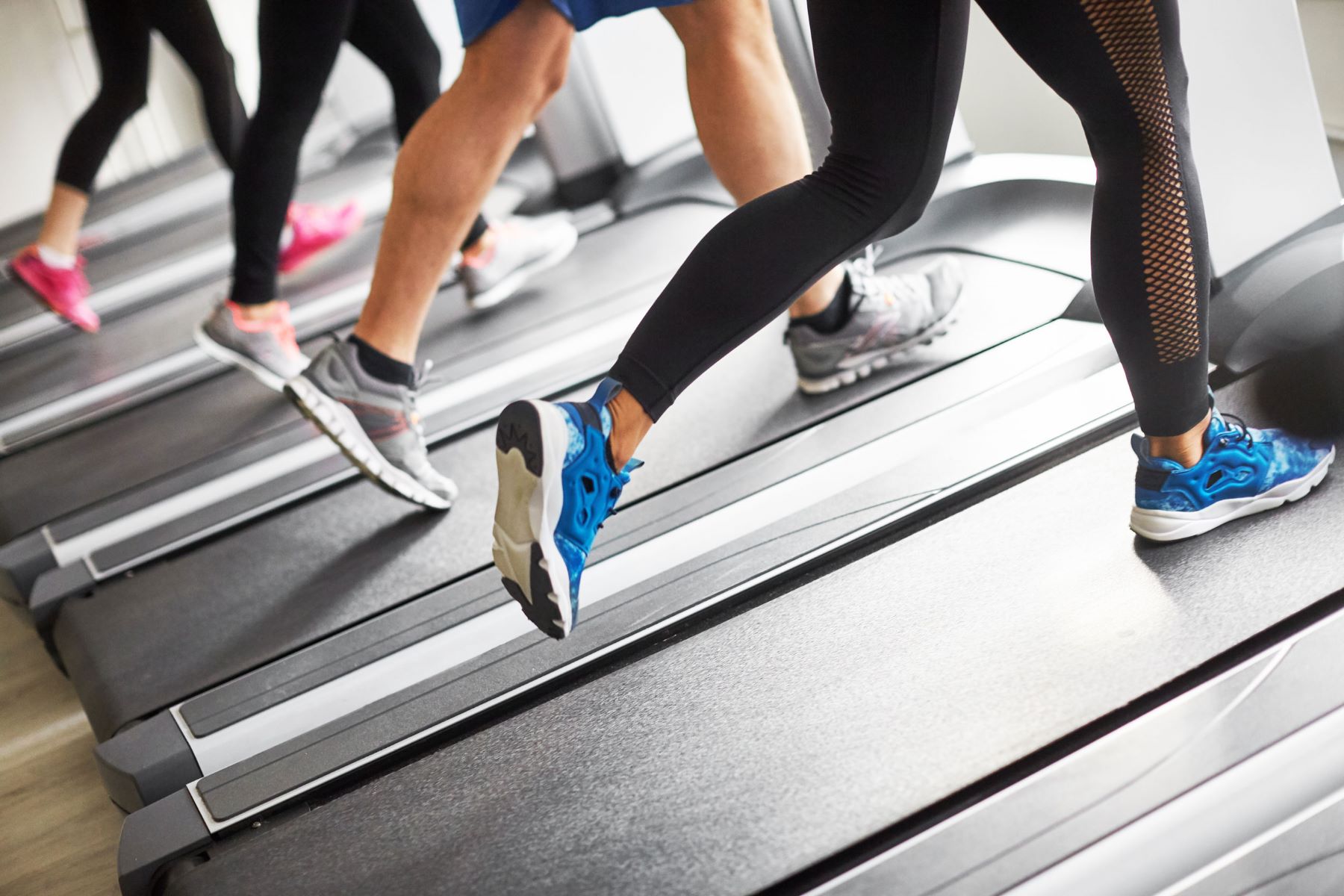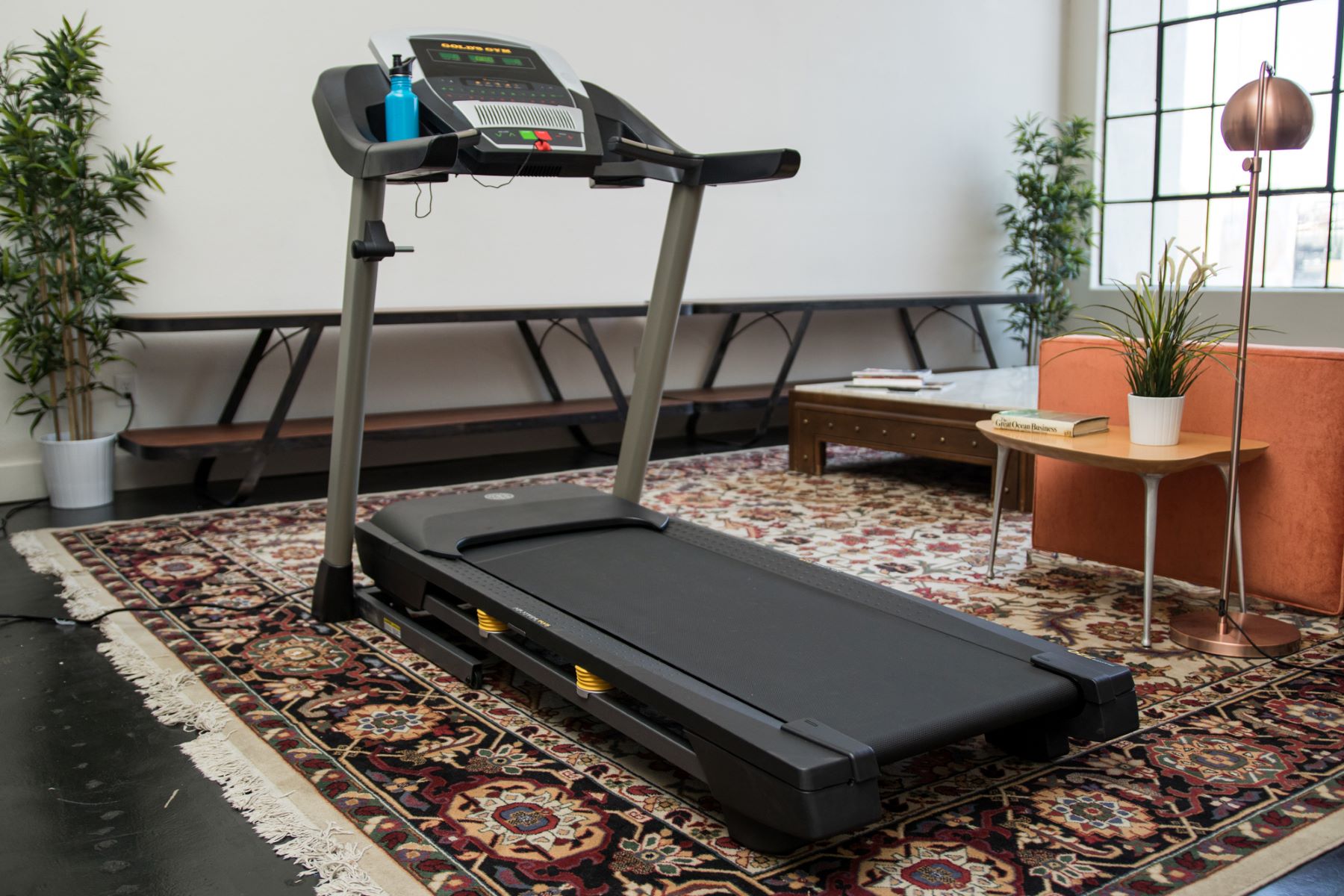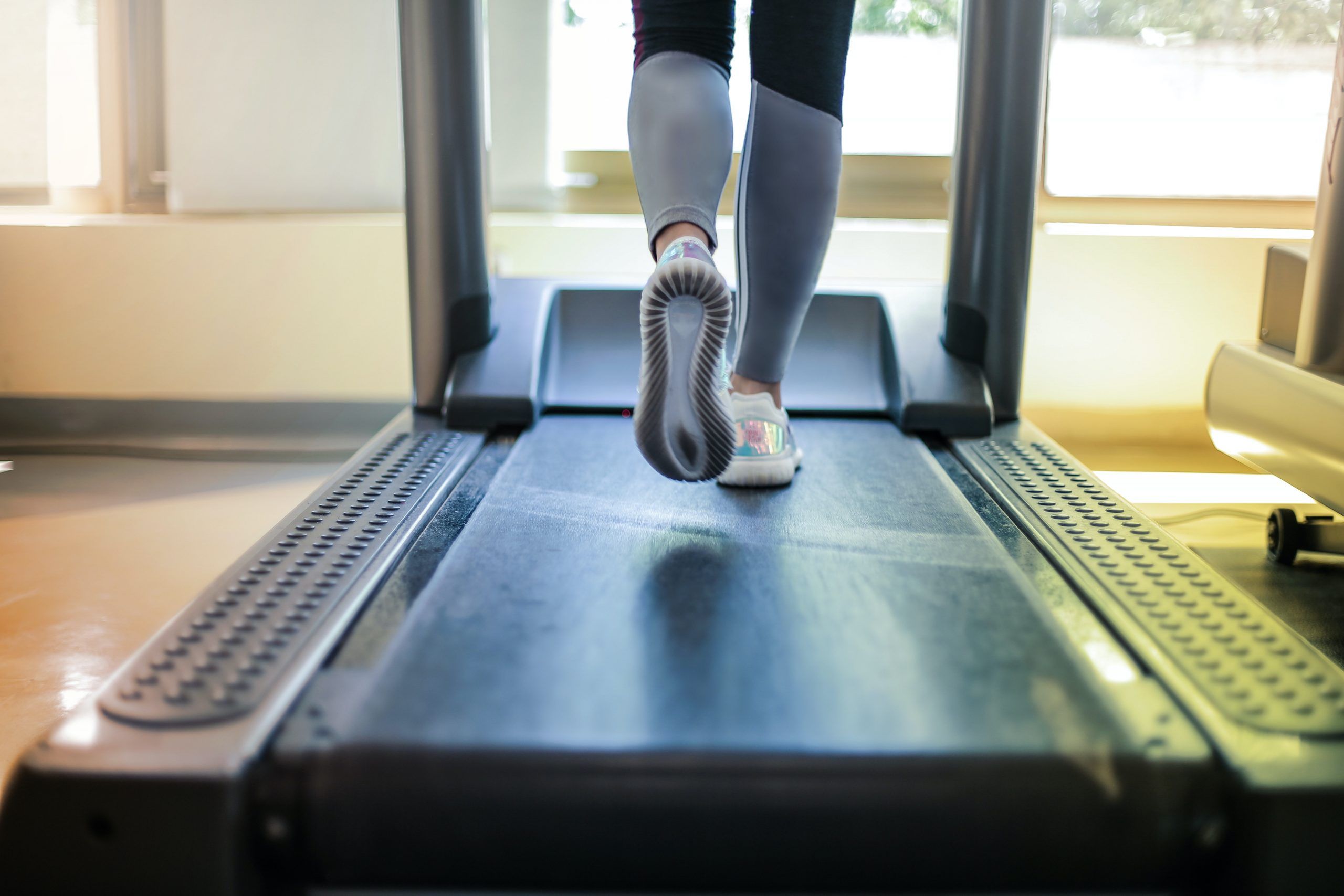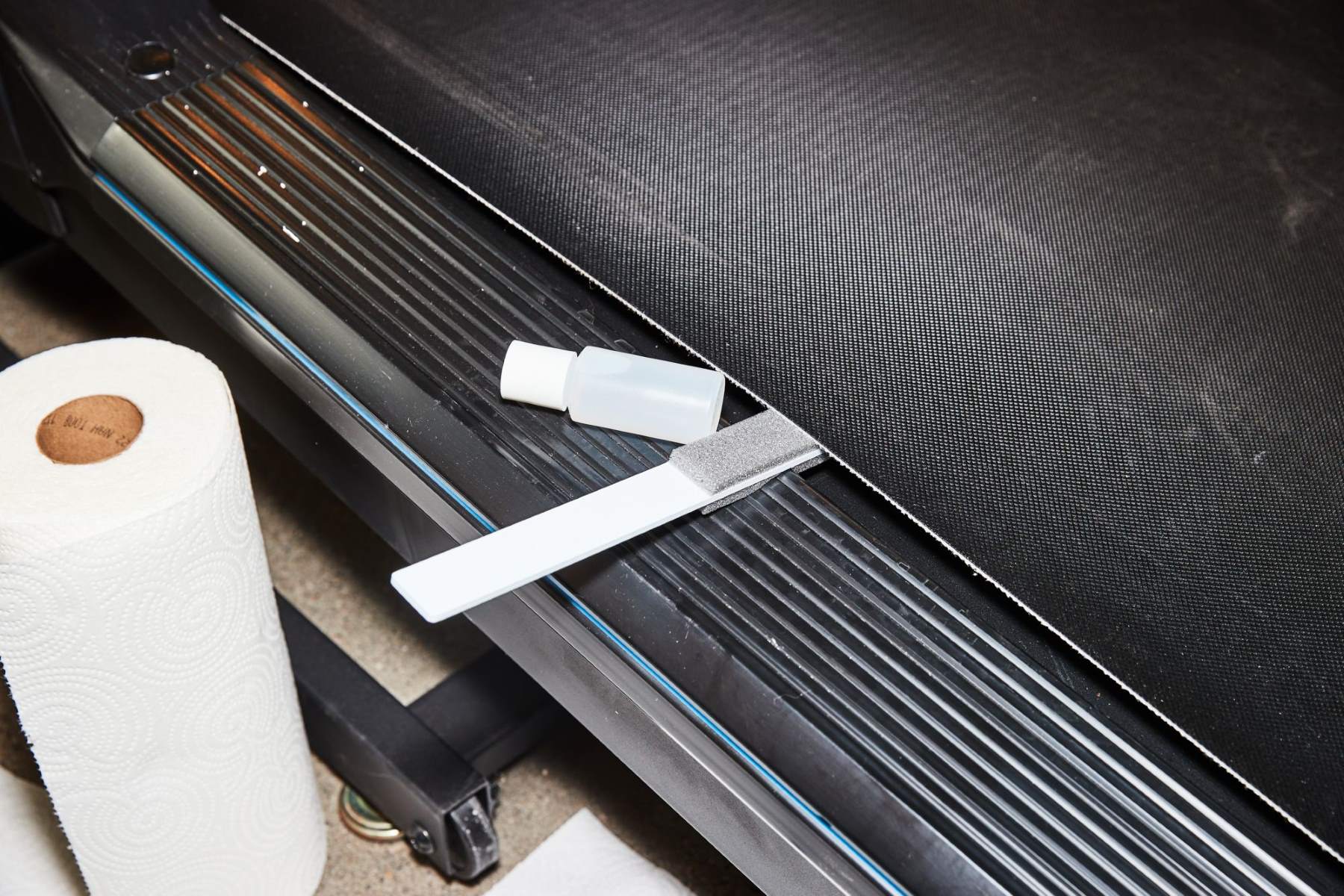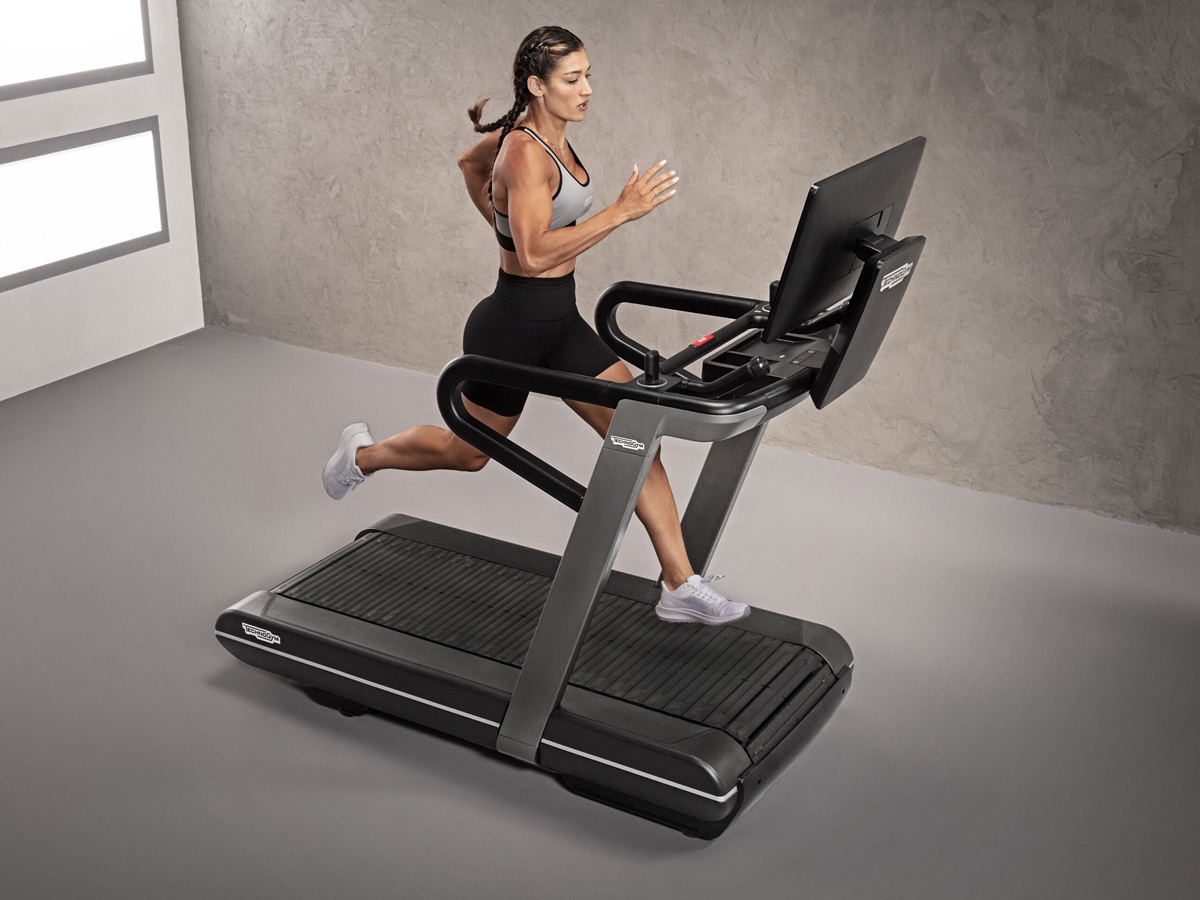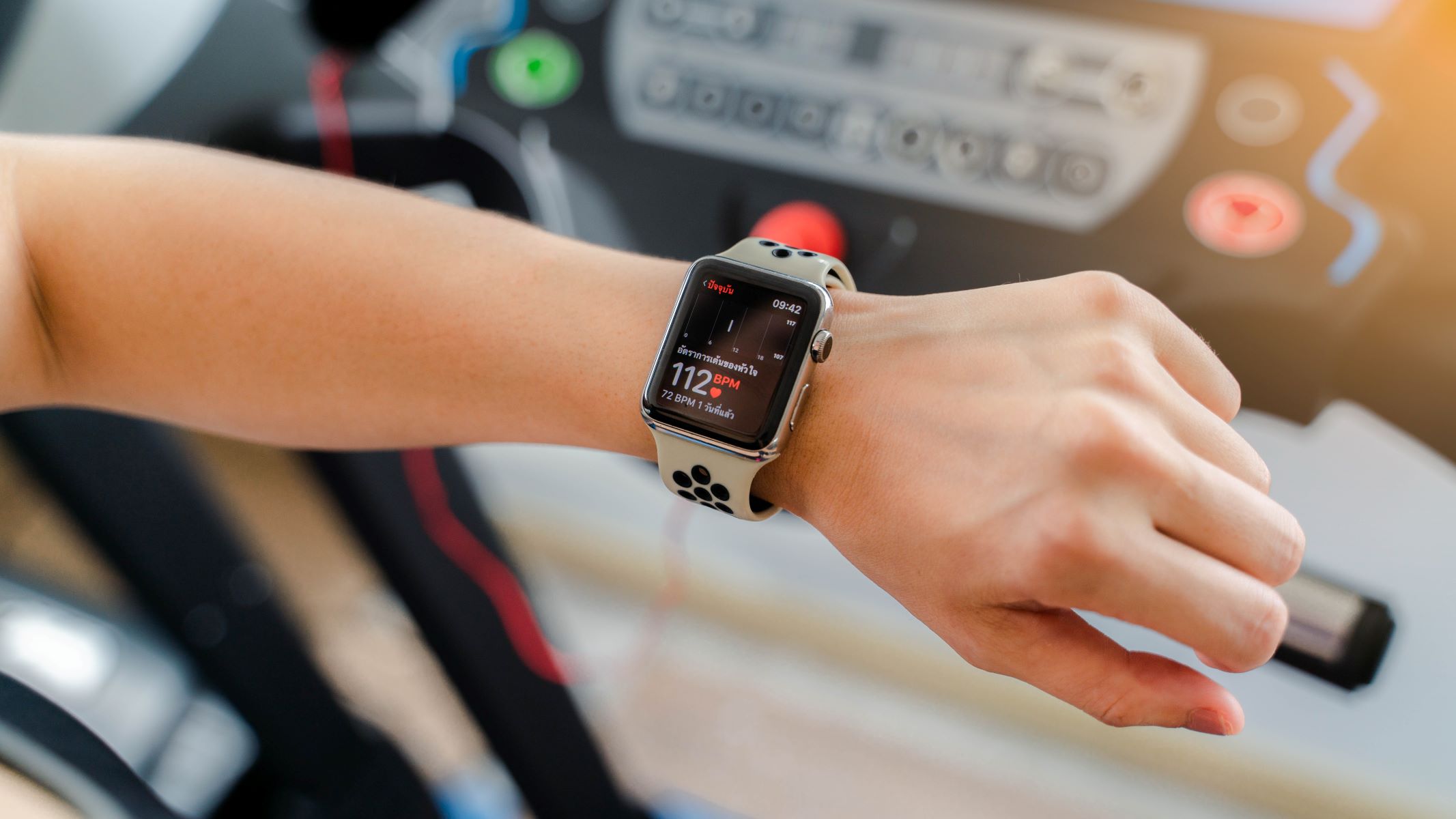Home>Misc>Featured>At What Speed Should I Run On A Treadmill


Featured
At What Speed Should I Run On A Treadmill
Modified: January 22, 2024
Discover the optimal speed for running on a treadmill with our featured guide. Find out how to maximize your workout and improve performance.
Introduction
Running on a treadmill is a fantastic way to stay active, improve cardiovascular fitness, and burn calories. Whether you are a beginner or an experienced runner, the speed at which you run on a treadmill plays a crucial role in achieving your fitness goals. But with so many options available, you might be wondering, “At what speed should I run on a treadmill?”
There is no one-size-fits-all answer to this question, as the ideal running speed on a treadmill depends on various factors, including your fitness level, goals, and overall health. Understanding these factors and finding the right speed for you can make your treadmill workouts more effective and enjoyable.
In this article, we will delve into the factors to consider when determining your treadmill running speed. We will also explore the benefits of running at different speeds, and provide guidance on setting personal speed goals. So, whether you are aiming for weight loss, improving your endurance, or simply maintaining a healthy lifestyle, read on to discover the optimal speed for your treadmill runs.
Factors to Consider
When determining the speed at which you should run on a treadmill, there are several key factors to consider:
- Health and Fitness Level: Your current health and fitness level should be a primary consideration. If you are a beginner or have any underlying health conditions, it is essential to start with a slower speed and gradually increase as your fitness improves.
- Goals: Your specific fitness goals will also influence your running speed on the treadmill. Are you aiming to lose weight, improve endurance, or increase speed? Different goals require different running speeds. Identify your goals, and align your speed accordingly.
- Body Mechanics: Understanding your body mechanics is crucial in determining the right speed. Consider your stride length, leg turnover, and overall running form. Running at a speed that allows you to maintain proper form and avoid excessive strain or injury is key.
- Heart Rate: Your heart rate is a valuable indicator of your exercise intensity. It is recommended to monitor your heart rate during your treadmill runs and adjust the speed accordingly. This will help you stay within your target heart rate zone for optimal cardiovascular benefits.
- Experience: Experience plays a significant role in determining your running speed on a treadmill. Experienced runners may be able to handle higher speeds, while beginners should focus on building a solid foundation before pushing their limits.
By considering these factors, you can determine the most suitable running speed on a treadmill that aligns with your abilities and goals. Remember, finding the right speed is a gradual process, and it is important to listen to your body and make adjustments as necessary.
Determining Your Maximum Heart Rate
Your maximum heart rate is the highest number of beats per minute your heart can achieve during exercise. Determining your maximum heart rate is crucial for understanding your cardiovascular capacity and establishing target heart rate zones for effective workouts.
An estimated way to calculate your maximum heart rate is to subtract your age from 220. However, this method provides a general estimate and may not be accurate for everyone. Several other factors, such as genetics and fitness level, can influence your maximum heart rate.
If you want a more accurate measurement, consider consulting a fitness professional who can conduct a submaximal or maximal heart rate test. These tests involve monitoring your heart rate during a controlled physical activity, such as running on a treadmill, to determine your actual maximum heart rate.
Once you have determined your maximum heart rate, you can then establish target heart rate zones based on your fitness goals. These zones are typically expressed as a percentage range of your maximum heart rate. For example:
- Low Intensity: 50-60% of maximum heart rate – ideal for warm-ups and cool-downs.
- Moderate Intensity: 60-70% of maximum heart rate – suitable for steady-state aerobic workouts.
- Vigorous Intensity: 70-85% of maximum heart rate – recommended for high-intensity interval training.
By referencing your maximum heart rate and target heart rate zones, you can regulate your running speed on a treadmill to ensure you are maintaining an appropriate level of intensity for your goals and fitness level.
Finding Your Target Heart Rate Zone
Once you have determined your maximum heart rate, it is important to find your target heart rate zone. This zone represents the range within which you should aim to keep your heart rate during your treadmill workouts. Different target heart rate zones are associated with specific benefits and training objectives.
To find your target heart rate zone, you can use a simple formula based on a percentage of your maximum heart rate. For example, if your maximum heart rate is 180 beats per minute:
- Low Intensity: 50-60% of maximum heart rate = (180 * 0.5) to (180 * 0.6) = 90 to 108 beats per minute
- Moderate Intensity: 60-70% of maximum heart rate = (180 * 0.6) to (180 * 0.7) = 108 to 126 beats per minute
- Vigorous Intensity: 70-85% of maximum heart rate = (180 * 0.7) to (180 * 0.85) = 126 to 153 beats per minute
By monitoring your heart rate during exercise, either manually or with the help of fitness trackers or heart rate monitors, you can ensure that you are effectively training within your desired target heart rate zone.
It is worth noting that these target heart rate zones are general guidelines and can vary depending on individual factors. Factors such as your fitness level, age, and overall health should be taken into consideration. Consulting with a healthcare professional or fitness expert can help you determine the most accurate target heart rate zones for your specific circumstances.
Regularly using your heart rate as a guide for your treadmill workouts can help you optimize your training, improve your cardiovascular fitness, and efficiently work towards achieving your fitness goals.
Benefits of Different Running Speeds on Treadmill
The speed at which you run on a treadmill can have various benefits on your overall fitness and health. Here are the advantages of incorporating different running speeds into your treadmill workouts:
- Low Intensity: Running at a low intensity speed, such as a brisk walk or a slow jog, can help improve cardiovascular endurance, burn calories, and enhance fat metabolism. This speed is ideal for beginners, warm-up exercises, and active recovery after intense workouts.
- Moderate Intensity: Running at a moderate intensity speed helps to improve aerobic fitness, increase stamina, and strengthen your cardiovascular system. This includes maintaining a steady pace that challenges but does not push you to your maximum effort. It is great for building endurance and burning calories.
- High Intensity: Running at a high intensity speed, such as sprinting or performing interval training, offers a plethora of benefits. It helps to improve speed, increase anaerobic fitness, and promote the afterburn effect, also known as excess post-exercise oxygen consumption (EPOC). High-intensity running helps burn calories, boost metabolism, and build muscle strength.
- Varied Speed Workouts: Incorporating different running speeds in your treadmill workouts, such as performing interval training or tempo runs, can help enhance your overall fitness. These workouts challenge your body to adapt to varying intensities, improve your cardiovascular capacity, increase calorie burn, and prevent plateauing in your fitness progress.
The key to reaping the benefits of different running speeds on a treadmill is to incorporate a variety of workouts into your routine. Aim to include a mix of low, moderate, and high-intensity runs to challenge different energy systems, prevent monotony, and continually progress in your fitness journey.
Remember, it is essential to listen to your body, gradually increase the intensity, and seek guidance from a fitness professional to ensure you are safely pushing your limits and optimizing the benefits of different running speeds on the treadmill.
Best Speed for Weight Loss on Treadmill
If weight loss is your primary goal, finding the right running speed on a treadmill is crucial. The ideal speed for weight loss may vary depending on factors such as your current fitness level and overall health. However, there are some general guidelines to consider:
Low to Moderate Intensity: Running at a low to moderate intensity speed is often recommended for weight loss. This means maintaining a pace that allows you to comfortably carry on a conversation while still feeling challenged. Exercising at this intensity helps to burn calories and promote fat oxidation. Consistency is key, so aim for longer durations rather than pushing for high intensity in shorter bursts.
Incorporate Interval Training: High-intensity interval training (HIIT) is another effective way to boost weight loss on a treadmill. Alternating between short bursts of high-intensity running or sprinting with active recovery periods can increase your overall calorie burn and metabolic rate, even after your workout has finished.
Vary Speed and Incline: To maximize calorie burn, try incorporating varying speeds and inclines during your treadmill workouts. By intermittently increasing the speed or incline, you can challenge your muscles, increase your heart rate, and burn more calories. This also helps to prevent your body from adapting to a steady pace, leading to greater weight loss results.
While finding the best speed for weight loss on a treadmill is important, it is equally essential to consider other factors like nutrition, overall exercise routine, and lifestyle habits. A well-rounded approach that combines cardiovascular exercise, strength training, and a healthy diet will yield the best weight loss results.
Remember to start gradually and listen to your body. Pushing yourself too hard too soon can lead to injury or burnout. It is always beneficial to consult with a fitness professional or a registered dietitian who can provide personalized advice based on your specific needs and goals.
Safe Speeds for Beginner Runners on Treadmill
For beginner runners, establishing safe and appropriate running speeds on a treadmill is crucial to prevent injury and build a solid foundation for long-term progress. Here are some guidelines to help beginner runners determine safe speeds:
Start with a Walking Pace: If you are new to running, begin by setting the treadmill to a comfortable walking pace. Focus on building endurance and gradually increase the speed as your fitness level improves. Walk briskly for a few minutes to warm up your muscles before transitioning into a jogging pace.
Find a Conversational Pace: Aim to maintain a running speed where you can comfortably hold a conversation. This conversational pace is an indicator that you are not pushing yourself too hard and can build endurance effectively. If you find it difficult to speak while running, slow down the speed until you can comfortably carry on a conversation.
Listen to Your Body: It is important to listen to your body and adjust your speed accordingly. If you experience pain or excessive fatigue, slow down or take a break. Over time, as your running form improves and your muscles adapt, you can gradually increase your speed.
Implement a Run-Walk Strategy: As a beginner, consider incorporating a run-walk strategy into your treadmill workouts. Alternate between running and walking at regular intervals, such as running for a minute and walking for two minutes. This approach helps to gradually increase your running stamina while giving your body enough time to recover.
Gradually Increase Speed and Distance: To avoid overexertion and minimize the risk of injury, it is important to gradually increase your running speed and distance. Incrementally increase your speed by small increments, such as 0.1 or 0.2 mph, and slowly extend your running time or distance. This gradual progression allows your body to adapt and reduces the likelihood of overuse injuries.
Remember, everyone progresses at their own pace, and there is no need to compare yourself to others. Focus on your own progress and listen to your body’s signals. Seek guidance from a running coach or fitness professional if you need assistance in determining the appropriate speeds for your running workouts.
Maintaining Proper Form at Different Treadmill Speeds
Maintaining proper form while running on a treadmill is essential for preventing injuries and maximizing the effectiveness of your workout. Regardless of the speed at which you are running, here are some tips to help you maintain proper form:
Posture: Keep your posture upright and aligned. Avoid slumping or leaning forward, as this can strain your back and shoulders. Engage your core muscles to support your spine and maintain stability throughout your run.
Head: Keep your head in a neutral position, facing forward, and avoid looking down at the treadmill display. This helps to maintain proper alignment of your spine and prevents unnecessary strain on your neck and upper body.
Arms: Your arms should be slightly bent at the elbows and swing naturally back and forth in rhythm with your running stride. Avoid crossing your arms in front of your body, as this can disrupt your balance and stride.
Hands: Keep your hands relaxed and lightly cupped, as if you are holding a delicate object. Avoid clenching your fists or tensing your hands, as this can create unnecessary tension in your upper body.
Stride Length: Maintain a comfortable and natural stride length. Avoid overstriding, which means landing with your foot too far in front of your body. Instead, focus on landing with your foot directly beneath your hip, ensuring a smooth and efficient running motion.
Cadence: Cadence refers to the number of steps you take per minute. Aim for a cadence of around 170-180 steps per minute, regardless of your running speed. A higher cadence helps to reduce the impact on your joints and promotes a more efficient running form.
Breathing: Focus on practicing controlled and rhythmic breathing. Inhale through your nose and exhale through your mouth. Experiment with different breathing patterns to find what works best for you and helps you maintain a steady rhythm during your run.
Remember, maintaining proper form is essential at all speeds. It not only reduces the risk of injury but also ensures that you are using your energy efficiently and effectively. Be mindful of your body’s sensations and make adjustments as needed to maintain optimal form throughout your treadmill workouts.
Setting Personal Speed Goals on Treadmill
Setting personal speed goals on a treadmill can help you stay motivated, track your progress, and gradually improve your running performance. Here are some tips to help you set and achieve your speed goals:
Assess Your Current Fitness Level: Start by assessing your current fitness level. Determine your baseline speed by running at a comfortable pace on the treadmill. This will give you a starting point from which to set your goals.
Establish Short-Term and Long-Term Goals: Set both short-term and long-term speed goals. Short-term goals can be achieved within a few weeks or a month, while long-term goals may take several months or even a year to reach. This allows you to have a clear pathway for progress and maintain motivation along the way.
Be Specific and Realistic: Set specific and realistic speed goals that are challenging yet attainable for your current fitness level. Gradually increase your speed by small increments, such as 0.1 or 0.2 mph, to build endurance and prevent overexertion or injury.
Use Interval Training: Incorporate interval training into your treadmill workouts to improve your speed. Interval training involves alternating between periods of high-intensity running and active recovery. This method can help you increase your anaerobic fitness and push your speed limits.
Celebrate Milestones: Celebrate your achievements along the way. As you reach your speed goals, acknowledge your accomplishments and reward yourself. This positive reinforcement will help you stay motivated and continue working towards further improvement.
Track Your Progress: Keep a record of your speed and distance covered during each treadmill session. Use a fitness tracker or log your workouts in a journal. This will allow you to visually see your progress over time and make adjustments to your goals if necessary.
Don’t Neglect Other Factors: Remember that speed is just one aspect of your overall fitness journey. Don’t neglect other important factors such as endurance, strength training, flexibility, and proper nutrition. A well-rounded approach is key to achieving your optimal performance.
Finally, listen to your body and prioritize safety. Pushing yourself too hard or setting unrealistic goals can lead to overexertion or injury. It’s important to rest and recover when needed, and seek guidance from a fitness professional or running coach to ensure you are on the right track.
Conclusion
Running on a treadmill can be a fantastic way to improve fitness, burn calories, and achieve your health goals. However, determining the right running speed on a treadmill is crucial to maximize the benefits and minimize the risk of injury. By considering factors such as your health and fitness level, goals, and heart rate, you can find the ideal speed that suits your individual needs.
For beginners, starting with a walking pace and gradually progressing to jogging and running is a safe and effective approach. It is important to maintain proper form and listen to your body at all speeds. Incorporating interval training, varying speeds, and setting personal goals can help keep you motivated and push your limits.
Remember, there is no one-size-fits-all answer to the question of the best speed on a treadmill. It is important to consider your individual circumstances, be patient with yourself, and seek guidance when needed. Whether you are aiming for weight loss, endurance improvement, or general fitness, finding the right speed on a treadmill can help you achieve your goals and enjoy your running experience to the fullest.
So, lace up those running shoes, hop on the treadmill, and find the speed that takes you one step closer to a healthier, fitter you!
